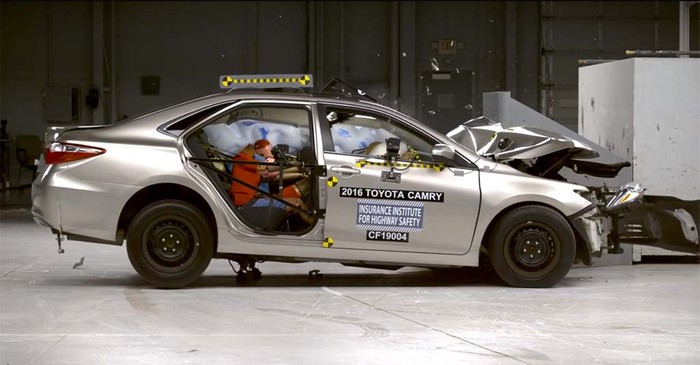
IIHS study reveals improvements needed in rear seat safety
Rear seat passengers aren't as safe as their front seat counterparts.
The Insurance Institute of Highway Safety is calling for a revaluation of rear seat restraint system after a new study revealed back seat passengers are often more seriously injured in frontal crashes than their front-seat counterparts.
For its study, the IIHS evaluated 177 cases in which rear seat passengers were seriously injured or killed. The institute was surprised to find that, in many cases, rear seat passengers were more severely injured in a front-end collision than those sitting in a vehicle's front seats.
Moreover, the IIHS discovered that the majority of rear seat fatalities occurred in crashes that were deemed survivable, which means the passenger compartment of the vehicle wasn't compromised.
The most common injury to rear seat passengers was chest injuries, which was documented in 22 injuries and 37 fatalities. By examining photos, police reports, medical documents and autopsy reports, the institute found that most of the chest injuries were caused by shoulder belts.
Head injuries were the second most common type of injuries recorded by the study. Of the cases examined, nine included rear seat passengers with head injuries and 18 had head injuries that led to death.
"Manufacturers have put a lot of work into improving protection for drivers and front-seat passengers. Our moderate overlap front crash test and, more recently, our driver-side and passenger-side small overlap front tests are a big reason why,” said IIHS President David Harkey. "We hope a new evaluation will spur similar progress in the back seat.”
The IIHS hasn't made any official recommendations to improve rear seat safety, but the institute suggests seat belt tensioners and force limiters -- which are commonly used in front seats to limit the movement of passengers and reduce shoulder-belt forces during a crash -- could be one possible solution. The institute also postulates that airbags for rear seat passengers could help reduce the number of injuries and deaths.
Ford and Mercedes-Benz have both introduced inflated seat belts intended to reduce forces transmitted to vehicle occupants.
"We're confident that vehicle manufacturers can find a way to solve this puzzle in the back seat just as they were able to do in the front,” Harkey said.